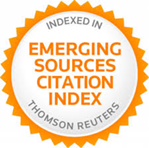Glory and Ruin of ’92: the “Pasteurization” of Urban Spaces in Sabotaje Olímpico by Manuel Vázquez Montalbán and Grupo 7 by Alberto Rodríguez
DOI:
https://doi.org/10.37536/preh.2024.12.1.2205Keywords:
1992, Noir Novel, Neo-Noir, Sabotaje Olímpico, Grupo 7Abstract
In this paper, we seek to build bridges between the transitional noir novel and Spanish neo-noir by comparing their critiques of the events of 1992. Both the noir novel of the Transition –which echoes the post-Franco social disenchantment– and contemporary film noir –in dialogue with the effects of the 2008 crisis and political corruption– are relevant vehicles for questioning the triumphalist visions of 1992, an unavoidable year for understanding the links between the country's past and present. Applied to the Spanish context, David Harvey’s concepts of “capitalist urbanization” in conjunction with Zygmunt Bauman’s “wasted humans” offer an essential framework for understanding the representation of urban change in the works being analyzed. On the one hand, in Sabotaje olímpico (Vázquez Montalbán 1993), the author discusses what he calls the “pasteurized city”: the elimination of any pathogenic agent that does not fit into the new urban design of Barcelona. On the other hand, in Grupo 7 (Rodríguez 2012), we observe firsthand the same process of “pasteurization” from the point of view of a corrupt and violent police brigade in charge of “cleaning” Seville of drugs before the upcoming celebration of the International Exposition. The analysis of both works demonstrates a fruitful dialogue between artistic disciplines that encourages reflection on different national-transnational models of the noir genre in Spain.
References
Bauman, Zygmunt (2004). Wasted Lives: Modernity and its Outcasts. Cambridge: Polity Press.
Bonnal, Jean y Andrea Jiménez Torres (2021). La ciudad del margen: casos de chabolismo en la ciudad de Sevilla a partir de la Expo 92. Trabajo Final de Grado. Universidad de Sevilla.
Christophers, Brett (2011). “Revisiting the Urbanization of Capital”, Annals of the Associations of American Geographers, 101(6): 1347-1364. DOI: https://doi.org/10.1080/00045608.2011.583569
Colmeiro, José F. (1994). La novela policiaca española: teoría e historia crítica. Barcelona: Anthropos.
Colmeiro, José F. (2014). Crónica general del desencanto: Vázquez Montalbán – Historia y ficción. Barcelona: Anthropos.
Davies, Ann (2012). Spanish Spaces: Landscape, Space and Place in Contemporary Spanish Culture. Liverpool: Liverpool University Press. DOI: https://doi.org/10.5949/UPO9781846317750
Delgado Ruiz, Manuel (2007). La ciudad mentirosa: fraude y miseria del “modelo Barcelona”. Madrid: Catarata.
Díaz Parra, Ibán (2016). “Sevilla 1929-1992. La producción de una mercancía”, in Cartografía de la ciudad capitalista. Transformación urbana y conflicto social en el Estado español, ed. Grupo de estudios antropológicos La Corrala. Madrid: Traficantes de Sueños, 219-248.
Dimendberg, Edward (2004). Film Noir and the Spaces of Modernity. Massachusetts: Harvard University Press. DOI: https://doi.org/10.4159/9780674261587
Douglas, Mary (1966). Purity and Danger: An Analysis of Concepts of Pollution and Taboo. Londres: Routledge.
Echevarría, Ignacio (2012). “La CT: un cambio de paradigma”, in CT o la cultura de la transición: Crítica a 35 años de cultura española, ed. Guillem Martínez. Barcelona: Random House, 25-36.
Garí Barceló, Bernat (2019). “Microhistoria del relato policial. Modulaciones políticas del detective latinoamericano”, Mitologías hoy: Revista de pensamiento, crítica y estudios literarios latinoamericanos, 19: 341-353. DOI: https://doi.org/10.5565/rev/mitologias.632
Garí Barcelo, Bernat (2022). “A propósito del neopolicial: Límites formales e ideológicos”, Artes del ensayo: Revista internacional sobre el ensayo hispánico, 4: 184-204.
Giardinelli, Mempo (2013). El género negro: orígenes y evolución de la literatura policial. Buenos Aires: Capital Intelectual.
Harvey, David (1985). The Urbanization of Capital. Oxford: The Johns Hopkins University Press.
Harvey, David (1989). The Condition of Postmodernity: An Enquiry into the Origins of Cultural Change. Cambridge: Blackwell.
Harvey, David (2013). Rebel Cities: From the Right to the City to the Urban Revolution. Londres: Verso.
Harvey, Penelope (1996). Hybrids of Modernity: Anthropology, the Nation State and the Universal Exhibition. Londres: Routledge.
Herrera Gil, Ezequiel (2018). “La ciudad en el cine negro español. España, carne de thriller desde los años ochenta”, in La ciudad: imágenes e imaginarios. Actas del Congreso Internacional Interdisciplinar celebrado en la Facultad de Humanidades, Comunicación y Documentación. Universidad Carlos III de Madrid, 639-646.
Herrero, Carmen (2007). “Paisajes urbanos y ‘no lugares’ en el thriller español contemporáneo: Fausto 5.0 y La caja 507”, Romance Studies, 25(2): 137-149. DOI: https://doi.org/10.1179/174581507x192983
López, Isidro (2012). “Consensonomics: la ideología económica en la CT”, in CT o la cultura de la transición: Crítica a 35 años de cultura española, ed. Guillem Martínez. Barcelona: Random House, 77-88.
Noguerol Jiménez, Francisca (2006). “Neopolicial latinoamericano: el triunfo del asesino”, Ciberletras: Revista de crítica literaria y de cultura, 15: 23-57.
Resina, Joan Ramon (1997). El cadáver en la cocina: la novela criminal en la cultura del desencanto. Barcelona: Anthropos.
Resina, Joan Ramon (2008). Barcelona’s Vocation of Modernity: Rise and Decline of an Urban Image. Stanford: Stanford University Press. DOI: https://doi.org/10.11126/stanford/9780804758321.001.0001
Rodríguez, Alberto (dir.) (2012). Grupo 7. Atípica Films, La Zanfoña, RTVE, Canal Sur: España.
Romaní, Oriol (2010). “Adicciones, drogodependencias y ‘problema de la droga’ en España: la contrucción de un problema social”, Cuicuilco, 49: 83-101.
Sánchez Zapatero, Javier (2020). “Novela negra o la inoperancia de una categoría”, Tropelías. Revista de Teoría de la Literatura y Literatura Comparada, 7: 1230-1239. DOI: https://doi.org/10.26754/ojs_tropelias/tropelias.202074683
Sánchez Zapatero, Javier y María Marcos Ramos (2014). “La representación de la sociedad en el cine negro: Enrique Urbizu y La caja 507”, Tonos digital, 27(0): 1-26.
Vázquez Montalbán, Manuel (2000). El hombre de mi vida. Editor digital: Titivillus. ePub base r1.2.
Vázquez Montalbán, Manuel (1993). Sabotaje olímpico. Editor digital: Samarcanda. ePub base r1.1.
Vilarós, Teresa M. (2018). El mono del desencanto: una crítica cultural de la transición española (1973-1993). Madrid: Siglo XXI Editores.
Downloads
Published
How to Cite
Issue
Section
License
Copyright (c) 2024 Fernando Sánchez López

This work is licensed under a Creative Commons Attribution 4.0 International License.








